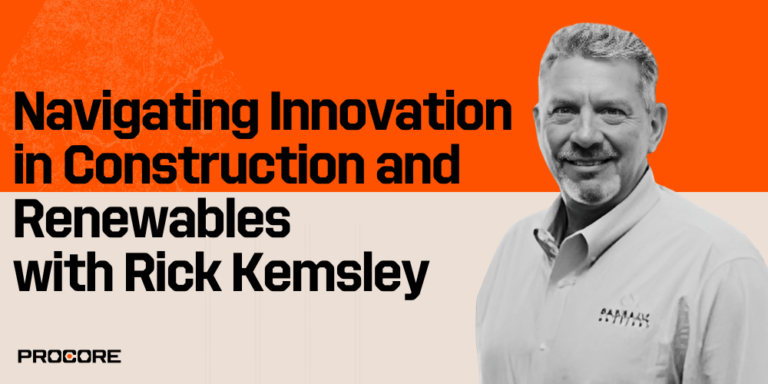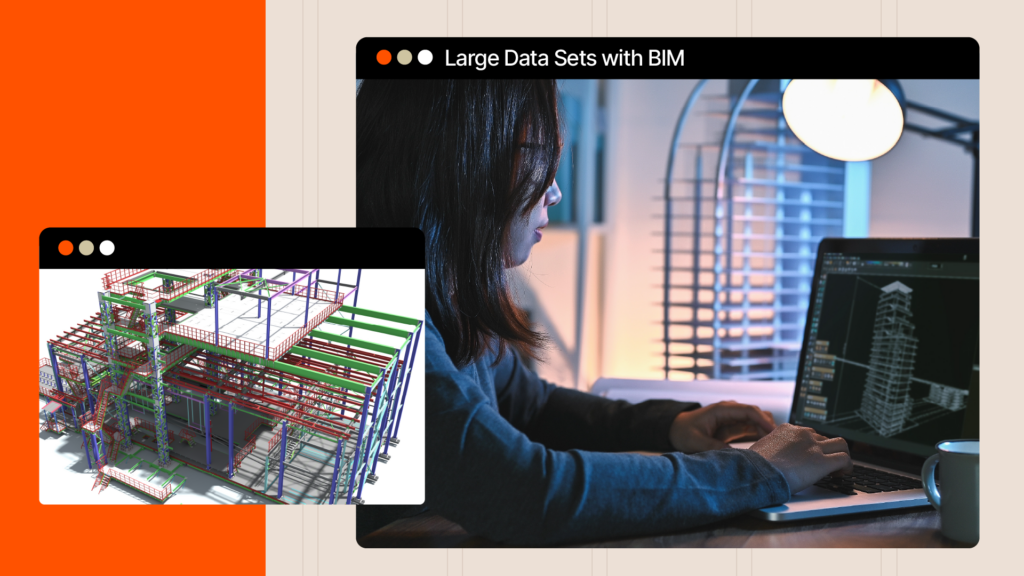— 8 min read
Navigating Innovation in Construction and Renewables with Rick Kemsley
Last Updated Apr 4, 2025
Last Updated Apr 4, 2025

Rick Kemsley, the Chief Technology Officer at Solargistix, brings over 20 years of experience in software consulting to the conversation. As a leader in developing and implementing innovative solutions for the renewable energy sector, Rick offers a wealth of knowledge gained from delivering complex projects for global clients.
In this interview, he’ll dive into the dynamic intersection of technology and the construction industry, with a particular focus on the rapidly evolving field of renewable energy. Rick discusses the perceptions around innovation in construction, the need to tailor technological solutions to real-world user needs and the transformative potential of advancements like AI.
There's a misperception that the construction industry is resistant to new technologies. How do you see the industry changing with innovation and technology?
It can be a game changer for us and also change the way that software companies, in general, look at their customers. Because today, almost every company that I've worked at, when you go and you talk to the training group, or you talk to the professional services group, it's specific to the tool. They don't create a user persona that says, this is how this user is going to use it.
They're like, this part of the system does this, and this part of the system does that. Which doesn't help the guys on the other side of it saying, “How do I best learn? I'm a superintendent. What do I have to touch?”
If you start thinking about how AI agents work, they're taking a part of a person's job and they're automating part of that person's job. It's not like they have to interact with it anymore. Now they can talk to it. Now they can say, “I need you to go and document what was said today in the safety meeting on site that we have recorded. I need that transcript and I need that put into a file for future reference.”
Think about the kind of time that saves when you start building things that way. All of a sudden, you’ve got more time.
As a Chief Technology Officer, how do you diagnose the issue and generate potential solutions?
What this comes down to is good old-fashioned software development techniques.
Being a good business analyst, and knowing that you have to learn the business in order to be able to solve the problem.
I come from a time and a place where we used to do a thing called Data Flow Diagrams. There are all kinds of ways to document how people work. I have a process, I need some kind of input to do that process, and I have some kind of output that comes out the other side of that process. Very basic stuff, but that's how you understand how business works. And it comes back to, how do I optimize the business to be the most effective that it can be?
When I'm talking about running a business, that's the level of learning that I think you have to do in order to be able to solve the problem correctly. Ultimately, the reason why we're doing all this, is that somehow you have to be able to make sure that you're making money, and that you're optimizing that money for either shareholders or investors or whoever's holding the checks at the end of the day.
What does profitability look like in renewables?
I think it's in a transitional state right now. The way it gets sold, most of the time, is on that profitability. How much of that actually gets realized depends upon how good of a salesperson you have.
But the reality is that investors aren't going to invest in things if there's not a break even out there for them somewhere. Construction is expensive at the end of the day. So if they don't see a return on their investment in three to five years, then what's the value to them?
Because if they don't start making money until eight years out, why am I going to do this project? By then, who knows what's going to happen. You have to have something that's going to pencil pretty quickly.
Am I going to go out there and take that chance right now and put in a whole bunch of renewable energy? We're doing one where I'm floating panels on a pond. There are different kinds of solutions for different things, and there are so many different solutions. You start looking at places like Europe, they're in some ways, way ahead of us on this stuff. We're in catch-up mode on a lot of this. Which is why there are solutions out there for us to pick off the shelf.
So it's really about conducting a lot of research, figuring out what's out there, and figuring out how you can solve problems for customers in a way that is still going to make money at a reasonable price, and at a point in time that makes it worth their while to invest.
What are some examples of innovation you’ve seen recently?
Take California, for example. We had NEM 2.0 which basically said, whatever you pay for your electricity, the utility has to pay you back.
Now with NEM 3.0, if you're paying 60 cents a watt for your electricity from the utility and I send it back, I'm only going to get 20 cents a watt back. If that's the case, why would I want to give my electricity back?
That's the advent of all the batteries that you see nowadays. I'm gonna keep my own energy and I'll use it when I want to use it instead. That changes the whole structure of the business plan. Batteries are expensive and you've got to take that into account and measure them.
That wasn't the case before. Because really, you're setting power back up to the grid, and it was up to the utility to really work it. Now people don't want to give all that power back. The only way I can do that is if I use it when I need it during peak load time. That changed a bunch of stuff out there in the industry. We're going down to Intersolar tomorrow, which is one of the conferences for renewable energy.
I will see probably hundreds of battery solutions. It’s the new hot item. We're talking about batteries that are in a 40 foot container of batteries.
You're using those for things like data centers because you need to have the ability to be able to have a data center run 24 hours a day, seven days a week at. Then you gotta cool it. The cooling of them is a challenge because what you have now are chips that create more heat than the older chips did. It's changed the whole philosophy of how data centers work really. So, the challenge that we have is things continue to change and not slowly.
How do you decide what innovations and solutions to bring onto your projects?
If you go out there and just look at PB panel providers, there are thousands of them now. They're making them everywhere from China, Vietnam, the Philippines, Romania, India — they're making them all over the world.
How do you find the ones that you think are going to last the longest or the best quality?
There are some ratings that they have. There's tier one, there's tier two, and they have to qualify, but then they also have to qualify, in the US, for UL. You have some standards out there that are helping sort some of that out.
But at the end of the day, is a 550 watt panel still 550 watts when it's actually hooked up? Or does it only produce about 490 watts? That's a part of it and that's not always readily apparent. But then you'll get some experience or you'll talk to other people who have bought it.
So you talk to other people in the industry and that's part of what going to the shows is all about.
I've got a couple of people that I know that have been in the industry for a long time. I use them as sounding boards for me when I'm doing stuff. That helps a lot because they've been around it, they've already seen the evolution from the beginning panels that were 220watt panels, up to the now 700s.
What advice would you give another CTO?
The most important thing, and this isn't just in construction, but it's in system development anywhere you go, make sure you understand the business. We have internal and external systems. Make sure the internal systems are solid on what your business process is, and actually support it.
While that's important everywhere, it's really important in construction because you have so many people that are disparate. You don't have them in an office, and you have to make sure that you're solving their problems and making them effective day to day.
It's really important to understand your business and then apply the solutions to the business, and not find the solution and try to apply the business to the solution.
Was this article helpful?
Thank you for your submission.
0%
0%
You voted that this article was . Was this a mistake? If so, change your vote here.
Scroll less, learn more about construction.
Subscribe to The Blueprint, Procore’s construction newsletter, to get content from industry experts delivered straight to your inbox.
By clicking this button, you agree to our Privacy Notice and Terms of Service.
Categories:
Tags:
Written by
Elise Girdwood
View profileJames Hamilton
69 articles
James Hamilton is a writer based in Brooklyn, New York with experience in television, documentaries, journalism, comedy, and podcasts. His work has been featured on VICE TV and on The Moth. James was a writer and narrator for the show, VICE News Tonight, where he won an Emmy Award and was nominated for a Peabody Award.
View profileExplore more helpful resources

The Role of the Design Manager: Bridging Design and Construction for Project Success
On complex construction projects, particularly those delivered through design-build and other alternative delivery methods, the lines between design and construction are increasingly blurred. Success depends on seamless collaboration, clear communication...

Sales Tax on Construction Materials: Who Pays It and When
Sales tax plays a major role in construction, influencing everything from material costs to contract pricing and compliance requirements. But deciding when and how sales tax on construction work applies...

Building Hospitals: A Guide for Owners and Developers
Building a hospital is one of the most high-stakes projects a healthcare organization or developer can undertake. Hospitals are highly complex facilities with intricate infrastructure, specialized medical equipment and strict...

Building and Using Large Data Sets with BIM
In recent years, two technological concepts have exploded, almost in parallel: One, called building information modeling (BIM), makes it possible for stakeholders to “build” construction projects in a 3D virtual...